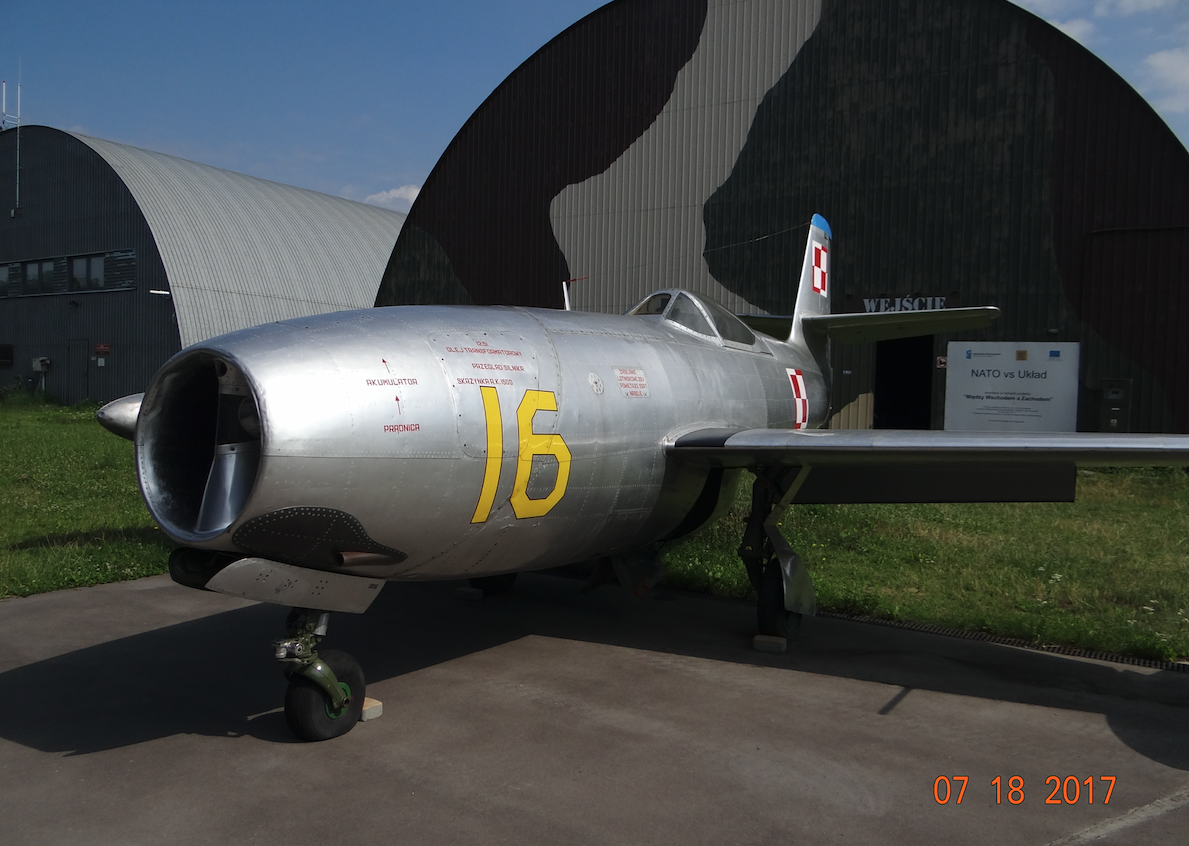Kraków 2007-02-16
085c Section 1951-01-06
Yakovlev Yak-23. Poland
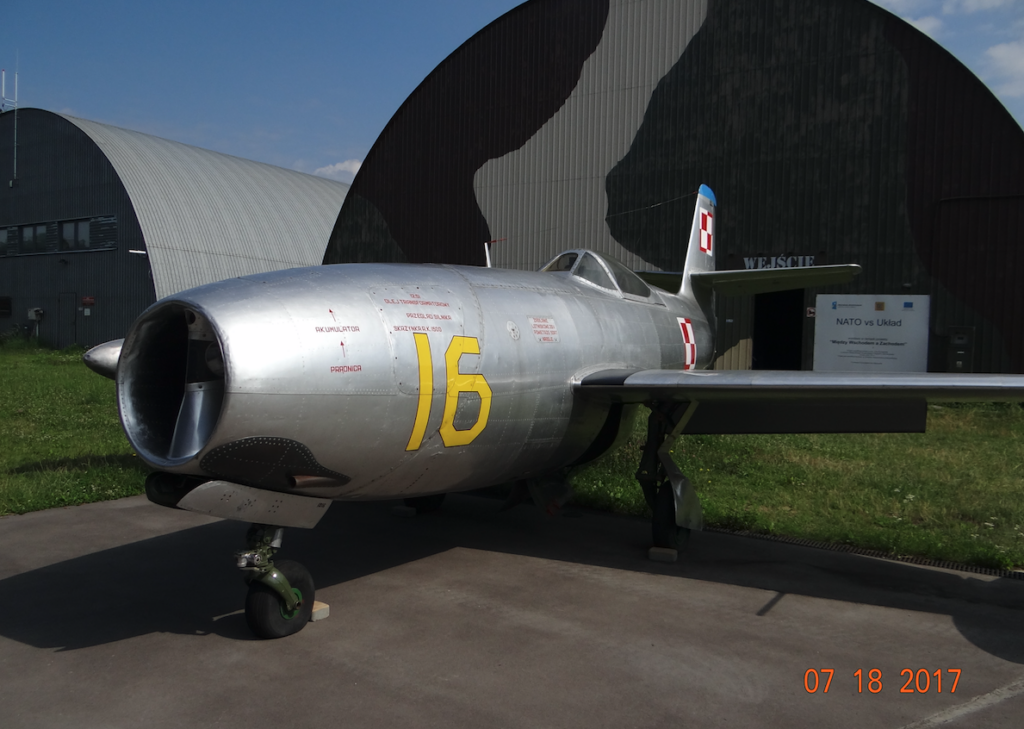
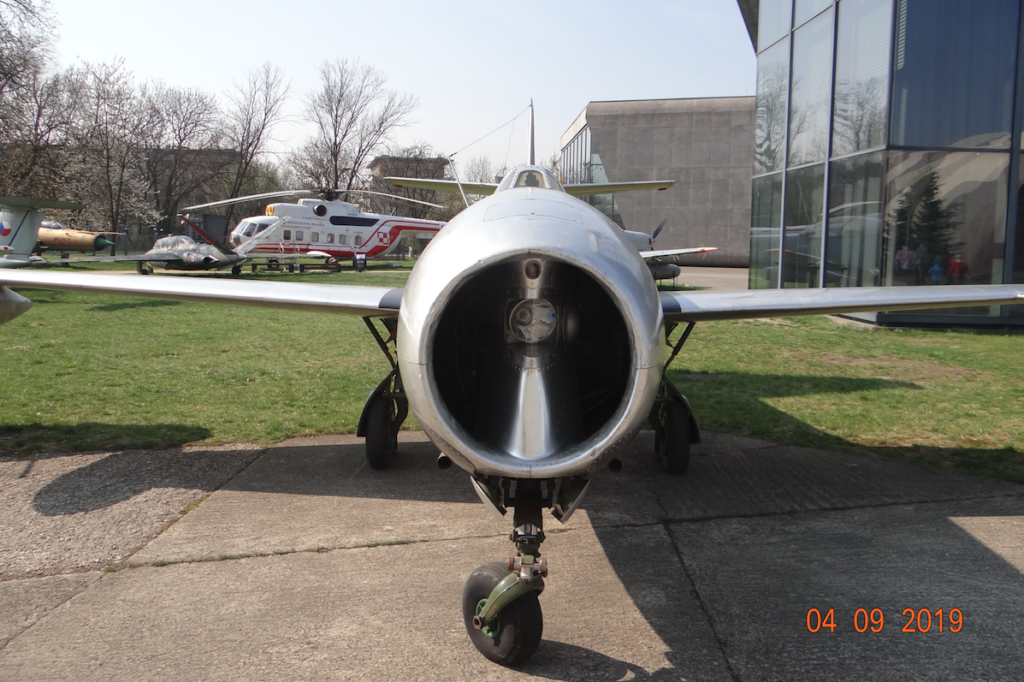
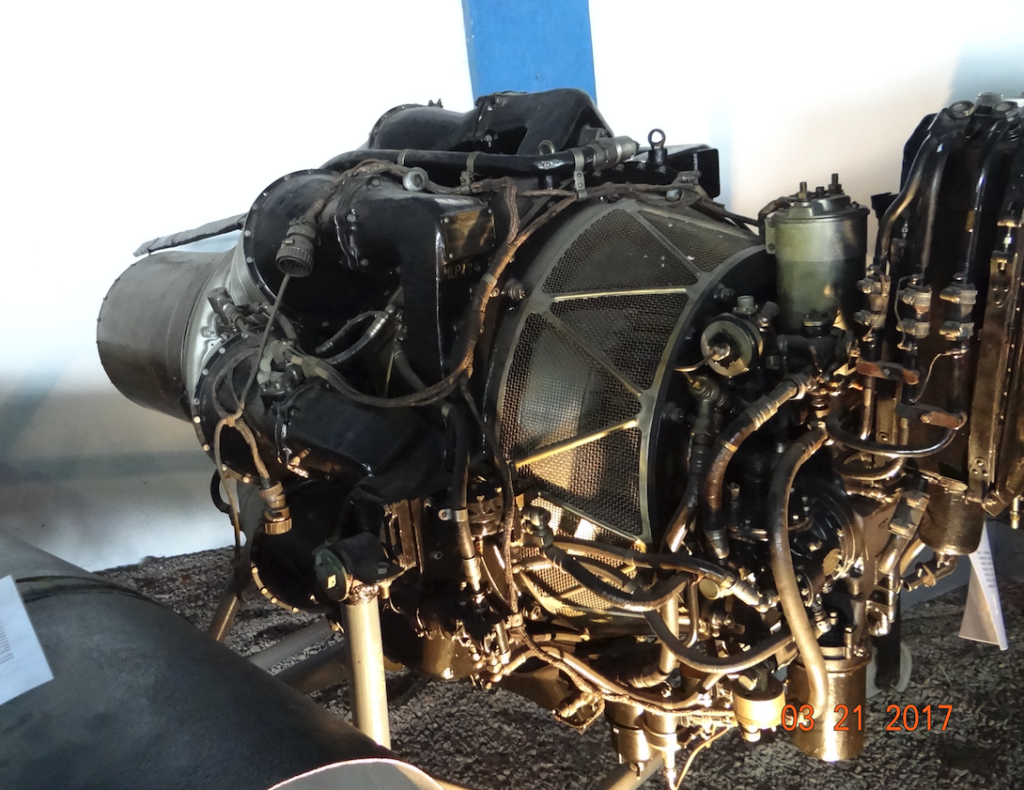
Yak-23 design
Yak-23 is a single-seat, single-engine fighter aircraft built in a redan layout, with a straight wing. Semi-monocoque design. Medium-wing.
Straight wing, undivided. At the fuselage, laminar profile S-1-12 changing into laminar KW-Z-12. Lift 3.5 degrees. Each wing is made of 2 spars and 17 ribs. The covering is made of D16ATW duralumin sheets with a thickness of 1.2 mm to 1.8 mm, riveted. The wing was equipped with ailerons with an area of 0.68 m2 and flaps with an area of 1.603 m2. The flaps were deflected for take-off by an angle of 25 degrees and for landing by 60 degrees.
The fuselage of the aircraft is a redan. The front part is removable to allow access to the engine and other equipment. The fuselage covering was made mainly of D16ATWŁ duralumin sheets with a thickness of 0.8 mm to 1.8 mm. In places exposed to high temperatures, the covering was reinforced with ZOHGSAŁ steel overlays with a thickness of 1.5 mm. The cockpit protrudes from the fuselage outline. The cabin glazing consists of a fixed windshield with three windows, the front one of armoured glass and a movable one-piece fairing that slides back. The cockpit equipment includes the ASP-3N sight (semi-automatic gyroscopic optical sight), first used on a serial CCCP aircraft. The second novelty was a light, pyrotechnically ejected pilot’s seat.
Classic empennage divided into rudder and stabilizer. The vertical stabilizer has an area of 1.0955 m2, and the rudder 0.5115 m2 and deflects 30 degrees to the left and right. The elevators with a trim tab, deflect 33 degrees up and 25 degrees down.
Three-support landing gear with a nose wheel. The landing gear base is 2.697 m, the main landing gear span is 2.100 m. The dimensions of the nose wheel are 400 x 150 mm, the main wheel is 570 x 140 mm. The front wheels are retracted into the fuselage to the rear. The main wheels are retracted into the wings and fuselage. To signal the landing gear deployment, lights in the cockpit and so-called soldiers on the wing are used.
Yak-23 drive.
The drive is the well-known RD-500 engine with a thrust of 1 x 1,590 daN. Maximum diameter 1,090 mm, length 2,060 mm, dry weight 581 kg, rotational speed 245 rpm. Fuel is located in 5 tanks in the fuselage; front 361 liters, left side 113 liters, right side 111 liters, service 30 liters and rear 295 liters. Two suspended tanks 2 x 190 liters. Total 1,290 liters.
Equipment
Additional equipment included the RSI-6M-1 radio station and the RPKO-10M radio half-compass. Most of the instruments are classic, analog.
Armament
The aircraft’s armament consisted of two 23 mm Nudelman-Suranow NS-23 or 150 P cannons, mounted in the front of the fuselage, under the engine air intake. In addition, the aircraft could carry two 60 kg bombs. An S-13 photo gun was mounted in the bulkhead of the intake tunnel or on the edges of the air intake.
Data T-T Jak – 23. Date 14.06.1947.
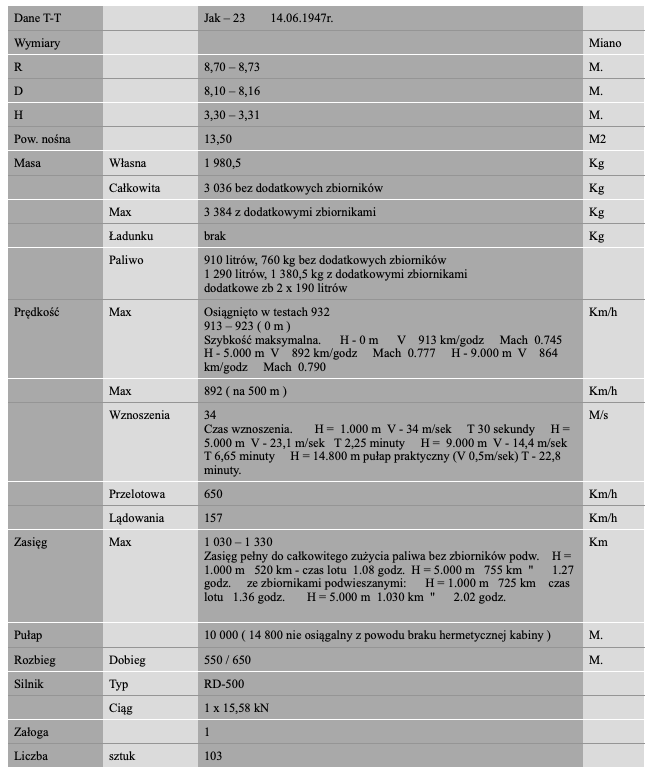
Written by Karol Placha Hetman

